R. Mark Liebenow's Blog: Nature, Grief, and Laughter, page 12
May 17, 2015
Trees With Leaves
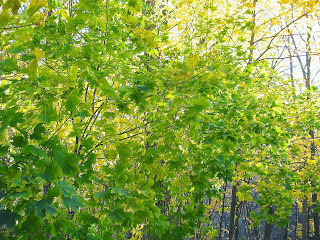 The woods behind the house now has hundreds of interesting trees with a variety of leaf shapes and colors. For months this winter I saw only bare brown trunks and branches that basically looked the same, so I looked right past them to the hill beyond.
The woods behind the house now has hundreds of interesting trees with a variety of leaf shapes and colors. For months this winter I saw only bare brown trunks and branches that basically looked the same, so I looked right past them to the hill beyond.People are like trees, and what makes people interesting are their differences, their peculiarities, their way of talking and thinking, the way they stir their coffee when they’re perplexed, or maybe they prefer tea over coffee.
What makes us valuable as friends is sharing how we see situations from a different perspective. Each of us is a unique combination of experiences, history, and influences, and we need to let others see us as we are — the sometimes sad or angry, the excited and funny, the ways we are creative. People want to know our emotions. I learned this lesson the hard way through grief. If people truly value us, they will be willing to put up with our negative aspects because they want us to be authentic. If they don’t like us, then they’ll leave is alone and we won’t have to worry about pleasing them.
Pleasing others. This is one of my hang-ups. I want people to like me. I also want people to know who I am. This is a dilemma when I can’t do both and have to decide which path to go down. And while I think that we all have a responsibility to help others when we can, I don’t think we have any obligation to be pleasant when we’re pissed off.
I want you to be a distinct person with emotions, dreams, and skills. The only sharing that matters is when we are open and honest with each other. I want you to be authentic so that I know who you are and can count on you being this when tragedy strikes one of us. Being pleasant doesn’t get us through turmoil.
I don’t want either of us to be the bare tree in a forest that no one sees or cares about.
Published on May 17, 2015 05:13
May 10, 2015
Walking Free
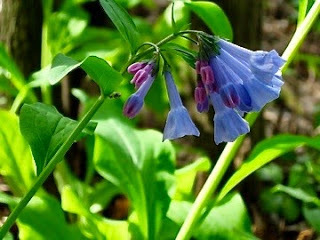 Out walking this morning, I am shocked to find that the world has gotten along on its own just fine without me. I haven’t been outside in a week, being busy with tasks inside the house. In the meantime, the trees have changed from empty branches to umbrellas of thick green, bushes and plants are flowering, and birds are filling the air with songs. I remember that I am part of the natural world, not the other way around. It feels enlightening to be outdoors again.
Out walking this morning, I am shocked to find that the world has gotten along on its own just fine without me. I haven’t been outside in a week, being busy with tasks inside the house. In the meantime, the trees have changed from empty branches to umbrellas of thick green, bushes and plants are flowering, and birds are filling the air with songs. I remember that I am part of the natural world, not the other way around. It feels enlightening to be outdoors again.As I walk, my breathing speeds up to match the pace of the body. My thoughts slow down to move at the pace of my breathing. My mind and body reconnect, unlike when I sit motionless at my desk and work with my mind, ignoring the needs of my body until I stand up stiff, hungry, and dehydrated.
By walking, I loosen up the ligaments of my brain that I’ve strapped down to get work done. I let it run and play, creating games and stories for what I see. Sometimes I stop and marvel at the architecture of a tree, the pink and lavender colors of Virginia bluebells, a squirrel that is watching me watch it to see what I will do.
It’s irresponsible, I know, to walk around my neighborhood with no purpose. The neighbors nod at me as I pass by, without a clue that I am on the loose.
Published on May 10, 2015 06:49
May 3, 2015
Morning Fog
 Before dawn, fog moves up from the river, through the forest, and fills the woods behind my house. It’s a bit gloomy. Yesterday we had sunshine, and the brightness brought a surge of energy. Today, not so much. I want to put on a sweater, sit in a soft chair by the window, drink hot tea, and read a book about someone else’s adventures.
Before dawn, fog moves up from the river, through the forest, and fills the woods behind my house. It’s a bit gloomy. Yesterday we had sunshine, and the brightness brought a surge of energy. Today, not so much. I want to put on a sweater, sit in a soft chair by the window, drink hot tea, and read a book about someone else’s adventures.As the sun rises slowly, the white particles of mist float and turn on the whims of the breeze. At first glance, it looks like fine snow is drifting down.
Then I see it.The three closest trees are in sharp focus, like an Ansel Adams’ photograph. I can see the different patterns of their bark, how deep they go. I notice the way one tree bends slightly to the left before straightening, and the tree with a branch that must have broken off during the ice storm last winter. How did I not notice these details before? Normally there are hundreds of trees and a thousand feet of woods behind my house. Now I can see only three trees and twenty feet. The rest of the forest has disappeared in the fog.
The three trees are magnificent. They stand silently like sentinels. Or like Don Quixote, Sancho Panza and someone else battling injustice. Mystery is afoot in the woods.
Sometimes I need a fogged-in day to see what is in front of me, what nature wants to show me.
Most of the time, I take in everything all at once in my constant rush to get work done. Specificity becomes an opaque blur. It’s the difference between mingling at a party and talking to everyone, or sitting on the side with one person, watching that person’s face and eyes, and seeing in them the history and struggles behind what is being spoken.
We listen to the spaces between the words we share.
We think that we want to understand everything. We want to believe that more knowledge will bring us more happiness. But knowledge is not understanding, nor wisdom, nor compassion, and many things we do not want to know.
We like the illusions that allow us to live our happy, protected lives. We do not want to know how many people are hungry today because family farms have been paved over with highways and shopping malls, how many animals are being abused in food factories so that we can have cheap meat, or how much of the wilderness is being bulldozed and polluted in the name of making money. Destruction has nothing to do with integrity or building community.
What we want, what each of us really do want, no matter how many illusions we hold on to to prop us up, is to experience a moment each day that is utterly real, a moment that gives us vision, hope, or a taste of the transcendent. We want to connect to something specific, something honest and true, like what the trees are doing for me this morning. Soon the fog will dissipate on the breeze, but I will remember.
We live for these moments.
If we do not slow down and pause for moments like this, then we will never see the trees, the dancing of the fog, or each other.
Published on May 03, 2015 06:20
April 26, 2015
Boundaries
 (photo of the top of Yosemite Falls in winter)
(photo of the top of Yosemite Falls in winter)I do not make the transition between seasons easily. I get comfortable with the season I’m in, having rediscovered its unique beauty, and I don’t want to let it go. All winter, without leaves on the trees behind my house, I’ve been able to see across the valley to the hill on the other side. This week, with a little rain and warmer weather, the leaves have begun to emerge and close off my view. I miss the beauty of the snow and being able to see the contours of the land that soon will be hidden by the forest.
Making any transition has never been easy. I remember one fall when I was hiking in Yosemite in late October anticipating a week of dry days and cool, but sunny weather. One night a snow storm moved in. The next day I went on my hike, as planned.
*
On the Yosemite Falls Trail going up the canyon wall, a scattering of snow begins to appear at the 6000-foot level. It gets deeper the higher I go, making the upward hike slippery and a little dangerous. I go around a bend and hit a cold wind funneling down, and think of the French voyageurs battling harsh weather as they canoed across Lake Superior. Then I think of Sigurd Olson canoeing there after them, in the Boundary Waters between Minnesota and Canada, listening to the voices of nature around him.
Higher up, the trail is slick with ice and I dig my feet into the snow on the sides and waddle the last hundred yards. On top, the snow is deep and unbroken. At 8,000 feet whatever sounds arise are quickly hushed by the foot of snow.
My original plan was to head west for the top of El Capitan, but I think that the trail going east to North Dome may have less snow. Neither trail is anywhere to be seen, and if there is ice and deep snow here, then it’s likely that the same conditions exist over the length of both trails. I head off anyway, because I do things like this, figuring that if I can see part of the trail now and then, I will be okay. But after twenty minutes of tromping around through snow that is getting deeper and is now above my knees, I find no evidence of any trail.
I stop moving to consider my options. Both trails run along the edge of the valley wall and a slip could be fatal. I could also fall into a snow-filled crevasse, break an ankle, and be buried. Yet I still stand in the snow trying to calculate how much I can push my luck. There are boundaries that I know I should not play with. This may be one of them.
Resigned that this is as far as I can go, I carefully make my way over to the lip of Yosemite Falls and watch its thin winter stream flow over the edge like water being poured from a pitcher. The heavy surge of water and the thunderous roar of the falls of spring and summer have been left behind. Looking into the distance, I see the stark, slate-gray mountains of the Sierra Nevada, and I’m in awe of the raw landscape. Spread out before me, over hundreds of miles, is the place where the sacred lives.
Quietly it begins to snow.
Published on April 26, 2015 10:17
April 19, 2015
Old Trees
There’s a street near my house that used to have large, majestic trees hanging over the road that provided cool shade even on the hottest summer day. For one block it felt like I was driving through what I imagine Sherwood Forest would look like.
Now half the trees are gone, trimmed back or cut down because they were old, and dead limbs were breaking off in storms. The street has a different feel to it, and it’s become every other streamlined road that takes me from here to there. I used to take a deep breath on that road to center me to something solid, real, and a little magical as I drove off to start my day.
The land we live on influences how we relate to others and deal with the day’s challenges.
When I sit by the river and watch it flow by, I feel the power of its endlessly surging water flowing on to the Mississippi River and the Gulf of Mexico a thousand miles away.
I hike through the quiet of the Forest Preserve and think that I’ve stepped three hundred years into the past when much of Illinois looked like this.
And when I drive through the countryside, I see the gentle roll of the land and I’m moved by its symbiotic relationship with the sky. This month I begin to see the green shoots of crops rising from fields that have been bare and brown for months.
As much as we make changes to the land, so the land also changes us.
*
Earth Day is this Wednesday. Do something nice for nature.
Now half the trees are gone, trimmed back or cut down because they were old, and dead limbs were breaking off in storms. The street has a different feel to it, and it’s become every other streamlined road that takes me from here to there. I used to take a deep breath on that road to center me to something solid, real, and a little magical as I drove off to start my day.
The land we live on influences how we relate to others and deal with the day’s challenges.
When I sit by the river and watch it flow by, I feel the power of its endlessly surging water flowing on to the Mississippi River and the Gulf of Mexico a thousand miles away.
I hike through the quiet of the Forest Preserve and think that I’ve stepped three hundred years into the past when much of Illinois looked like this.
And when I drive through the countryside, I see the gentle roll of the land and I’m moved by its symbiotic relationship with the sky. This month I begin to see the green shoots of crops rising from fields that have been bare and brown for months.
As much as we make changes to the land, so the land also changes us.
*
Earth Day is this Wednesday. Do something nice for nature.
Published on April 19, 2015 05:46
April 12, 2015
Walking With Senses Open
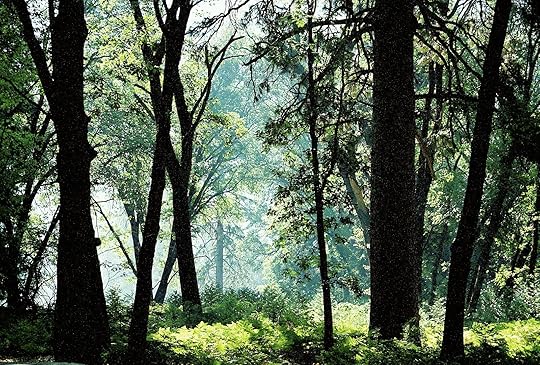 To really experience nature, I need to have all of my senses working. I want to be aware of the large, carnivorous animals moving through the woods before I run into them, of course, but I also want to see beyond the generalities of woods, sky, and river and see their specifics.
To really experience nature, I need to have all of my senses working. I want to be aware of the large, carnivorous animals moving through the woods before I run into them, of course, but I also want to see beyond the generalities of woods, sky, and river and see their specifics. I want to look at the individual trees, and see how they are different — the roughness of the bark, the shape of their leaves, and if they have nuts. I want to watch the interaction between the river and its bank and see what creatures live there. I want to listen to the quieter sounds of what is going on around me, and find the creek that is trickling somewhere nearby. I want to watch the movements of a vole walking under the leaves that is making them twitch. I want to have a feeling for the landscape, so that when I come around the bend I will instinctively know if it is going to rise or go down, be in sunlight or in shade.Too often if I’m outdoors in a familiar place, I overlook what is around me because I think that everything is the same as when I came through here the last time. But nature keeps changing. And I limit what my eyes see today by deciding what I’m going to see. For example, once I headed out to see what Half Dome looked like in the early dawn, and I was so focused on getting a good view of the dome that I didn’t notice the coyote resting in the meadow, a ten-point buck under the oak tree, and a harlequin duck on the river.
Next time you’re outside, don’t focus on anything. Just open your eyes and try to see everything at the same time. Be aware of movement on the periphery of your vision. Notice the birds flying overhead without looking directly at them. It’s an unfocused looking because what we’re doing is trying to see everything at once and react to what is going on before we decide where to put our focus.
I’ve found this helpful when trying to see owls in the woods behind the house. The trees and leaves create so many crisscross images that it’s hard to spot an owl. But as I look carefully, a pattern begins to emerge, and I see an owl sitting motionless on a branch.
Another important sense is smell, and this is where your mouth comes in. When you’re outdoors, open your mouth a little and breathe in using both your nose and mouth. You should be able to flood all of your smell receptors by doing this. Have you ever seen an animal with its mouth slightly open sniffing the air? That’s what it’s doing.
I discovered this one day when I was hiking in the highlands behind Eagle Peak. It was hot and I was tired after hiking ten miles so I took a break. I happened to be breathing with my mouth open because I was out of breath, not used to hiking at 8000 feet, and I began to pick up a variety of scents. I closed my mouth and sniffed, but the scents were faint. I opened my mouth, breathed in again, and picked up the scents of pine trees, granite, moisture from a nearby creek, and also something musky. So I waited. A minute later a deer walked out of the woods fifty feet ahead me.
Published on April 12, 2015 05:44
April 5, 2015
Spring Trees
 Tiny buds that I can’t see on trees in the distance are giving the woods behind my house a light green sheen.
Tiny buds that I can’t see on trees in the distance are giving the woods behind my house a light green sheen.Last week I noticed a beautiful bare tree. Without any leaves, everything was visible —the trunk, main branches, even the smaller branches as they extended thinner and thinner into thousands of fingers. The tree was so symmetrical that I gazed at it in admiration, then had to leave because I was at a stop light.
We are like trees and the branches are our lives –relationships, projects, work, and all of our interests over the years. As some of our interests end, those branches die and fall off. As people we knew in high school move away, those branches never develop any further. When we start new interests and relationships, new branches appear and grow. The roots and the trunk of who we’ve been remain strong and provide support for our new ventures. A few days ago I went into the woods and found a tree that did not survive the winter. The bark on my old friend was beginning to come off in places. I’ve enjoyed the beauty of this tree over the years. I’ve sat under it when it was full and glorious in its summer green, and I’ve watched it sway back and forth in the wind and endured the driving rain of thunderstorms. A hollow in the trunk has already become a new home for squirrels. Soon its branches will let go under their own weight, and the tree will fall. Then it will become a home for insects and grubs, and attract a new set of birds. Its body will be reabsorbed into the earth and nurture the next generation.
Death is part of the life cycle, too, although I do not like the changes it brings. I mourn this tree’s passing.
Published on April 05, 2015 06:50
March 29, 2015
Hiking Alone in Nature
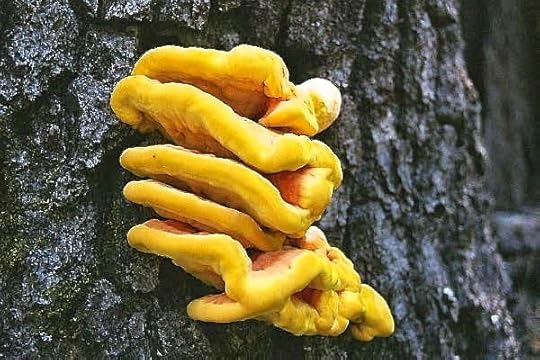 We aren’t alone when we hike by ourselves in nature because nature goes with us. Nature is a companion who walks at our pace, and has stored treasures around each bend in the trail. Sometimes nature converses so loudly that we can’t hear ourselves think, like when we’re standing at the bottom of a waterfall, feeling the earth vibrate from the pounding water. Sometimes it murmurs so quietly that we have to get down on our knees and lean in close to hear what it’s saying.
We aren’t alone when we hike by ourselves in nature because nature goes with us. Nature is a companion who walks at our pace, and has stored treasures around each bend in the trail. Sometimes nature converses so loudly that we can’t hear ourselves think, like when we’re standing at the bottom of a waterfall, feeling the earth vibrate from the pounding water. Sometimes it murmurs so quietly that we have to get down on our knees and lean in close to hear what it’s saying.Often we don’t have to hike very far to feel nature’s presence. All we have to do is find a spot that feels right, sit, and let nature come to us. After half an hour, the birds and animals will set their caution aside, and resume what they were doing, and we can watch them go about their daily lives.
We can also hike on and on without stopping until our senses go on overload and we go numb with the onslaught of amazing image after image.I often have a problem when I go hiking because I want to see everything, and I’ll plan a hike to include as many scenic spots and destinations as I can fit in and get back to camp just as darkness if falling. This means that I don’t leave any wiggle room to linger at places that I didn’t know existed. If I’ve hiked up into the highlands from the valley floor, there aren’t any shortcuts home. If I’m halfway though a hike when I want to make a change, it’s either 7 hours back or 7 hours on to complete the hike. Once I reach the halfway point, I don’t have time to explore a new waterfall.
I’ve learned quite a bit from the rock climbers I camp with, like the need to take calculated risks now and then. Most of them don’t value speed climbers, those who use a stopwatch to see how fast they can get up the face of El Capitan. My friends like the art of climbing, and to them speed climbing is just a stunt. In my early days of hiking in Yosemite, I also delighted in seeing how fast I could hike somewhere, keeping time to see if I could beat my previous record. It told me what kind of physical shape I was in, but I could not tell you anything about the red flowering something that I saw on the hillside by Nevada bridge. I couldn’t tell you if they were flowers or tiny colored leaves. Since then I’ve learned the value of slowing down.
Once I hiked to the top of Yosemite Falls, crossed over the bridge, and was following the trail along the edge of the canyon towards North Dome. The plan was to have lunch there, wave at the people on the top of Half Dome across the valley, and come back down in time for a late dinner. But soon after crossing over Yosemite Creek and passing the Lost Arrow, I saw a vista along the rim that I had never seen before. So I sat down, and it was delightful. I stayed there and watched the valley for a couple of hours before hiking back. I was so proud of myself.
When I hike, I like to feel my way, sitting when I feel like sitting, and exploring little creeks cascading down then they appear. I want my relationships to be spontaneous, not planned out for the next decade. I want to do work that nurtures me as much as I nurture it. I don’t want to get to the end of life and realize that I haven’t lived at all, just reached destinations. I want people to be sad, really sad, when I die, and not just cross my name off their Christmas card list.
Nature meets us where we are, and encourages us to go further into our thoughts and feelings. Nature brings us new mysteries and realities to ponder.
When we listen to nature, we hear the wilderness within respond.
Published on March 29, 2015 06:21
March 22, 2015
Wilderness Prayer
 Mindfulness is camping in the wilderness, rising at dawn, and listening to nature wake up around you as you cook breakfast over a fire.
Mindfulness is camping in the wilderness, rising at dawn, and listening to nature wake up around you as you cook breakfast over a fire.Prayer is a conversation we have with the mountains and rivers, with ravens and coyotes. We share our thoughts and feelings, and as we listen to the Other, our perceptions about ourselves and the world change and deepen. As we watch the lives of nature, we grow in compassion for all creatures.
The insights of contemplation come like a cool breeze on a hot day when we’re hiking up the steep ridge behind North Dome.
Awe is feeling the Creator walk by in storm that roars and bashes the valley walls with lightning and thunder.
As we hike into unknown territory, we trust the Spirit of nature to guide us to where we need to go. We travel with holy intention on a search that may take years, but being mindful is not the answer.
Mindfulness is a journey, and compassion is our companion along the way.
Prayer is being aware of the beauty of a single pine seedling rising through the humus on the ground.
Gratefulness is watching the alpenglow on white granite mountains fade and stars appear that travel overhead, and feeling connected to them on their pilgrimage through the depths of the Great Cosmos.
Published on March 22, 2015 06:19
March 15, 2015
Send Them Outside to Play
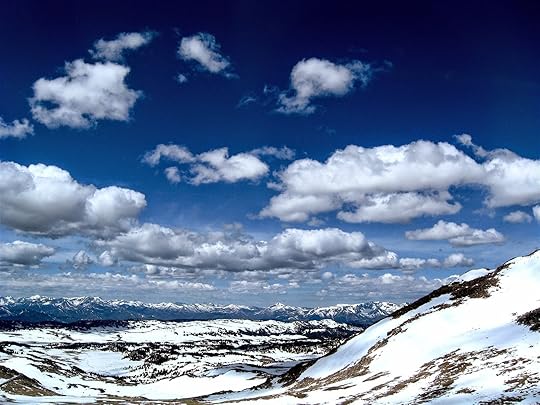 If you have no relationship with nature, you have no relationship with humanity.
If you have no relationship with nature, you have no relationship with humanity.-- Krishnamurti
The landscape of one’s home is always sacramental. It molds our character. It’s the soil out of which we grow. It’s where we either encounter the divine or we never make the connection.
-- Seamus Heaney
If we have a relationship with nature, we do better in relationships with people because we realize that the health of our community depends on the health of our environment. We realize there are bigger truths in the world than our own personal truths. Nature also has a way of humbling us, and reminding us that we’re not in control outdoors. In nature we become aware of a greater power.
If we don’t connect to nature, we will regard the forest only as a source of wood for building homes. We will think of the river only as a place for factories to dump their waste water. We won’t care about pesticides running off the land and into our lakes, killing the fish and making the water undrinkable. Unless we have a favorite fishing hole, or a favorite river that we like to canoe, we won’t care because we won’t have a personal investment.
Large businesses don’t care about the environment. They only exist to make as much money as fast as they can for their shareholders. Large businesses have large PR teams that create rosy picture to make you think they care. They don’t.
If we don’t connect to nature, if we don’t love the woods and rivers and mountains, if we don’t feel part of the community of living creatures, then we will exploit the land, and we will exploit each other. If we aren’t in community, then we exist only for ourselves.
And when we die, we will be alone, closed up in a hermetically-sealed room because the air smells bad. We will drink artificial water, and eat tasteless, plastic food. And we will be depressed by the lack of natural beauty outside our windows because it’s all been bulldozed flat.
Send your children outdoors to play so that they will grow up loving the land and care what happens to it. Go outside yourself before you become crusty and bitter. Breathe in the fresh air of the mountains and feel yourself come alive. Then you will understand what is at stake.
Pay attention to what is going on in nature before it becomes a toxic dead zone.
Published on March 15, 2015 08:10



